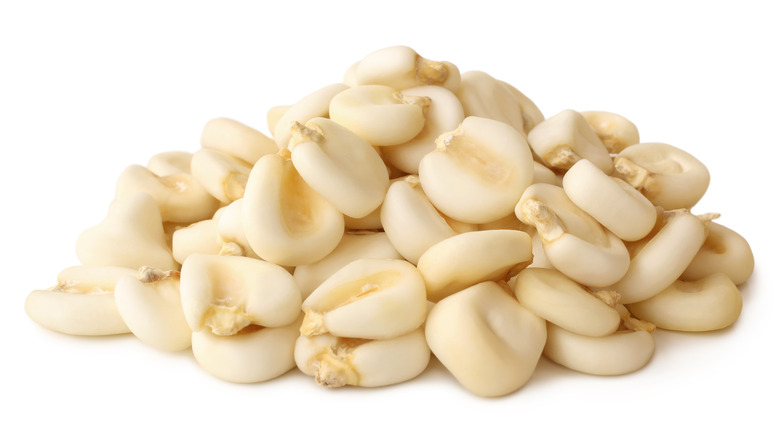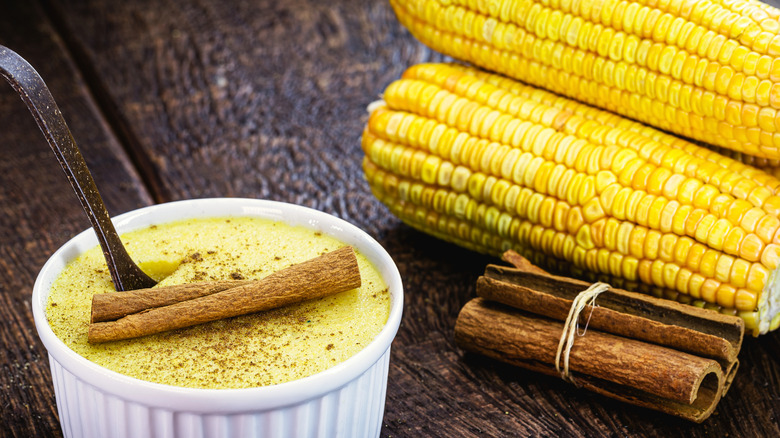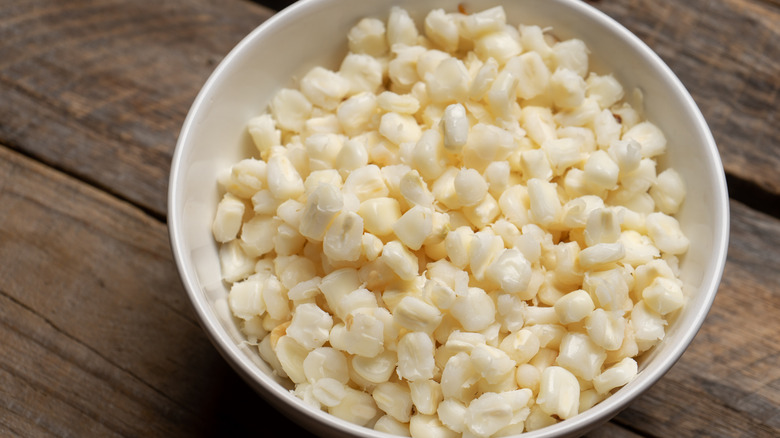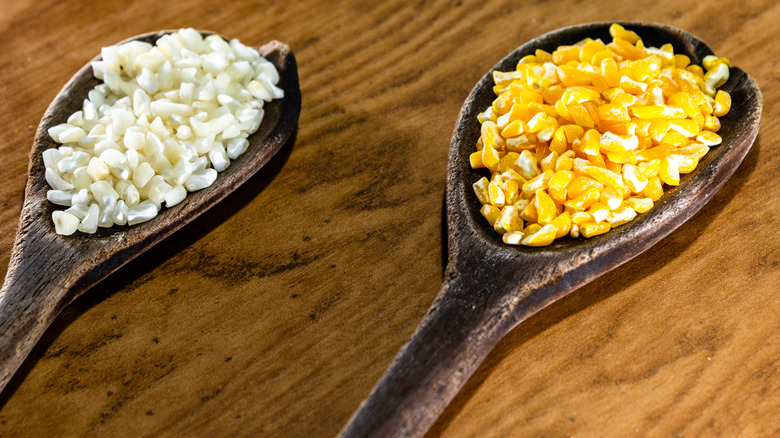What Is Hominy And What Does It Taste Like?
Unless you were a real corn fanatic, you probably wouldn't know that there are six types of corn kernels that can be found in the United States: dent, flint, flour, pop, sweet, and waxy. Sweet corn on the cob is what you'd be serving at barbecues or during mealtimes; dent corn is what producers use to make chips and tortillas, as well as bourbon and moonshine; while flint corn is what gets turned into corn flour, grits, and hominy.
Flint corn is hard — very hard. In fact, it is so hard that this type corn would be impossible to eat off the cob, because it would take more than a good boil to make flint corn easy to chew. So in order to make hominy, The Spruce Eats states that producers give flint corn an extended bath in an alkaline solution which strips the grain of its hull and its germ. It also causes kernels to puff up, making it look like bigger versions of themselves.
Is hominy healthier than corn?
Because flint corn and sweet corn are kissing cousins, we'd expect that hominy's nutrition profile wouldn't be too different from that of sweet corn. When hominy is cooked up as grits, Healthline says a cup offers up four grams of protein, one gram of fat, and 38 grams of carbs, and it's high in folate (25 percent of the daily recommended intake or RDI), thiamine (18 percent of RDI), niacin (13 percent of RDI), and riboflavin (13 percent of RDI). By contrast, Healthline reveals that a cup of sweet yellow corn packs 5.4 grams of protein, 2.1 grams of fat, and 41 grams of carbs, as well as thiamine (24 percent of RDI) and folate (19 percent of RDI).
Eat This, Not That! explains the small differences in the nutrition profiles between sweet corn and hominy as being caused by the alkali bath that the latter undergoes, also known as "nixtamalization." The process is said to trigger the release of vitamin B3 or niacin, so our bodies can absorb it more easily.
Where would I find hominy in the grocery store?
Hominy is easy to recognize in its near-indigestible state, because you see it displayed everywhere as decorative corn to celebrate the coming of fall. As an ingredient, you can find it in the canned food section of the grocery store, as you might do with other types of vegetables. When hominy is purchased this way, it is also packed with a bit of liquid (via Southern Living).
Hominy isn't just canned; It can be bought whole as a dry grain and as such is sold in bags like rice or dried beans. When hominy is purchased in this form, it needs to spend some time in water before it can be used.
Hominy can also be found ground up — but while this ingredient is ready to be made into grits, Southern Living warns that you cannot add liquid to hominy and expect you'll be able to make cornbread with it. After all, ground hominy is corn that has undergone a process called nixtamalization, which involves soaking the kernels in limestone or wood ash, as well as water (via Farm & Forage Kitchen).
What do I do with hominy?
If you're trying to decide between white and yellow hominy, know that they are almost identical. In a social media post, Teasdale Latin Foods likens the subtle difference between white and yellow hominy as that between white and brown rice; It explained that white hominy is processed by removing the entire cornhusk, which gives it a pure white appearance and soft feel, while yellow hominy is closer to traditional Mexican hominy and is used in more traditional ways. According to Food and Nutrition, yellow hominy is sweeter than white.
Whole hominy is an important ingredient in Mexican cooking and is added to soups and stews like posole and menudo; Fine Dining Lovers says hominy is considered a good way to bulk up vegetarian chilis.
If you get your hands on ground hominy, either plain or flavored, the ingredient can be cooked up into grits and topped with cheese and bacon. It can even be made into patties and then fried. Ground hominy is also critical to making masa — the dough used to make Mexican and Latin American treats like tortillas or tamales.



